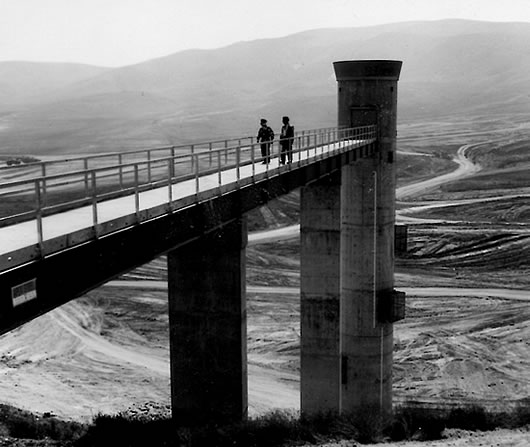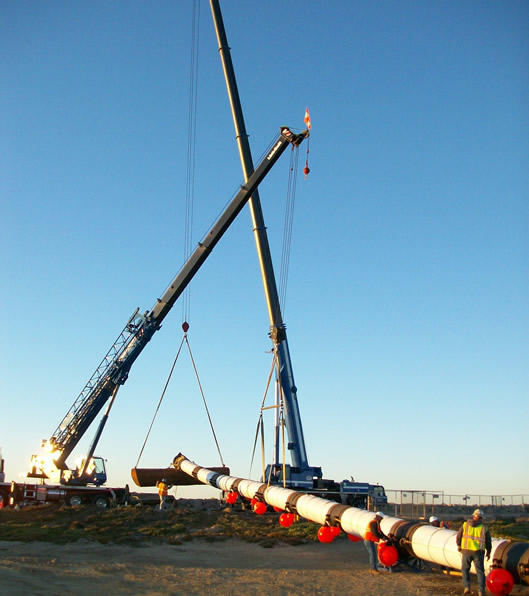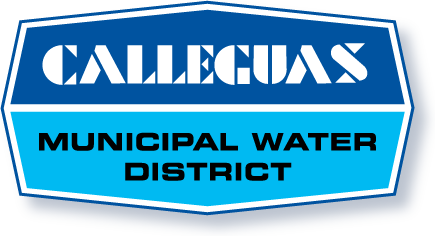
- About Us
- Overview
- Board of Directors
- General Manager Profile
- Agendas and Minutes
- Member Purveyors
- District History
- Public Notices
- Water Resources and Quality
- Capital Projects
- Doing Business with CMWD
- Builder and Developer Corner
- Human Resources
District History
In 1953, faced with recurring droughts, an expanding population and economy that would soon exhaust local drinking water supplies, voters in southern Ventura County united to form the Calleguas Municipal Water District for the purpose of providing the region with a reliable supply of high quality supplemental water. Finding a dependable water source for a semiarid region such as Ventura County was no simple feat: adequate rainfall is unreliable, rivers are seasonal, and groundwater often brackish and unsuitable for both urban and agricultural uses.

Following a thorough evaluation of potential water sources, the District turned to the planned State Water Project's system of canals, reservoirs and pumping plants to be built to convey water captured from the snow covered peaks of the Sierras to many regions throughout the state. To secure water from the state system, voters approved another ballot measure in 1960 so that Calleguas could join Metropolitan Water District of Southern California, a state water contractor.

Shortly after becoming a member agency of Metropolitan, Calleguas assumed the task of building a pipeline network to bring imported water into Ventura County. It cost $22 million to construct the more than one-mile-long Santa Susana Tunnel through the mountains east of Simi Valley, along with the necessary pipelines to connect to Metropolitan's system in Los Angeles County. In 1965 Calleguas completed Lake Bard, a surface water reservoir, to store water for use to meet peak summer and emergency demands. Following the completion of the first phase of the State Water Project in the early 1970s the pipelines were linked to Metropolitan's Jensen Filtration Plant in Granada Hills.
In 1991, the State of California imposed new water quality regulations requiring that previously purified water be treated again if it had been stored in an uncovered reservoir. To comply, Calleguas designed a treatment system for water stored in Lake Bard that not only meets all federal and state regulations, but surpasses them. In 1995 Calleguas completed a $23 million state-of-the-art treatment plant that disinfects water with ozone gas in place of traditional chlorine treatment. Calleguas finished an expansion of the plant in 2005 bringing its present capacity to 65 million gallons per day.
Over the last half century, the number of residents in the district's 366 square mile service area has more than quadrupled from 138,000 in 1964 to an estimated 642,000 in 2017, roughly 75 percent of Ventura County's population. Communities served include the cities of Oxnard, Port Hueneme, Camarillo, Thousand Oaks, Moorpark, Simi Valley, and the unincorporated areas of Oak Park, Santa Rosa Valley, Bell Canyon, Lake Sherwood, Somis, Camarillo Estates, Camarillo Heights and Naval Base Ventura County.
Rapid population and economic growth has placed increasing demands on the District with annual deliveries rising from 9,000 acre feet to above 100,000 acre feet over the same period. Calleguas' member purveyors receive water through 140 miles of large-diameter pipeline operated and maintained by the District. Those purveyors distribute the water for ultimate delivery to residents and businesses.
It was the foresight of members of Calleguas' original Board of Directors that led to the creation of the District in 1953. Calleguas continues to look ahead to meet the needs of its service area for generations to come. Refinements to the District's groundwater storage facilities in the Las Posas Groundwater Basin are ongoing. In an emergency, stored water will be recovered through a system of groundwater wells and treated prior to delivery to local water users.
 In addition, the District has completed construction of the first 16.7 miles of the Regional Salinity Management Pipeline (SMP). Salt levels are increasing in the Calleguas Creek Watershed's groundwater and surface water, rendering Calleguas Creek and many of its tributaries unsuitable for a variety of uses. The SMP will collect and convey brine concentrate from new groundwater desalters to be sited throughout the watershed and surplus flows from existing wastewater treatment plants to the ocean through a newly constructed outfall. Allowing for the development of additional groundwater resources, the SMP will greatly reduce the region's dependence on imported State water and enhance area surface and groundwater resources.
In addition, the District has completed construction of the first 16.7 miles of the Regional Salinity Management Pipeline (SMP). Salt levels are increasing in the Calleguas Creek Watershed's groundwater and surface water, rendering Calleguas Creek and many of its tributaries unsuitable for a variety of uses. The SMP will collect and convey brine concentrate from new groundwater desalters to be sited throughout the watershed and surplus flows from existing wastewater treatment plants to the ocean through a newly constructed outfall. Allowing for the development of additional groundwater resources, the SMP will greatly reduce the region's dependence on imported State water and enhance area surface and groundwater resources.

